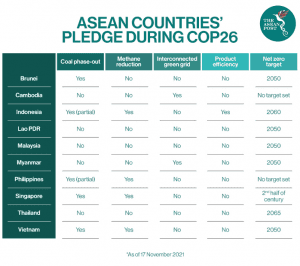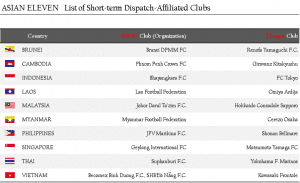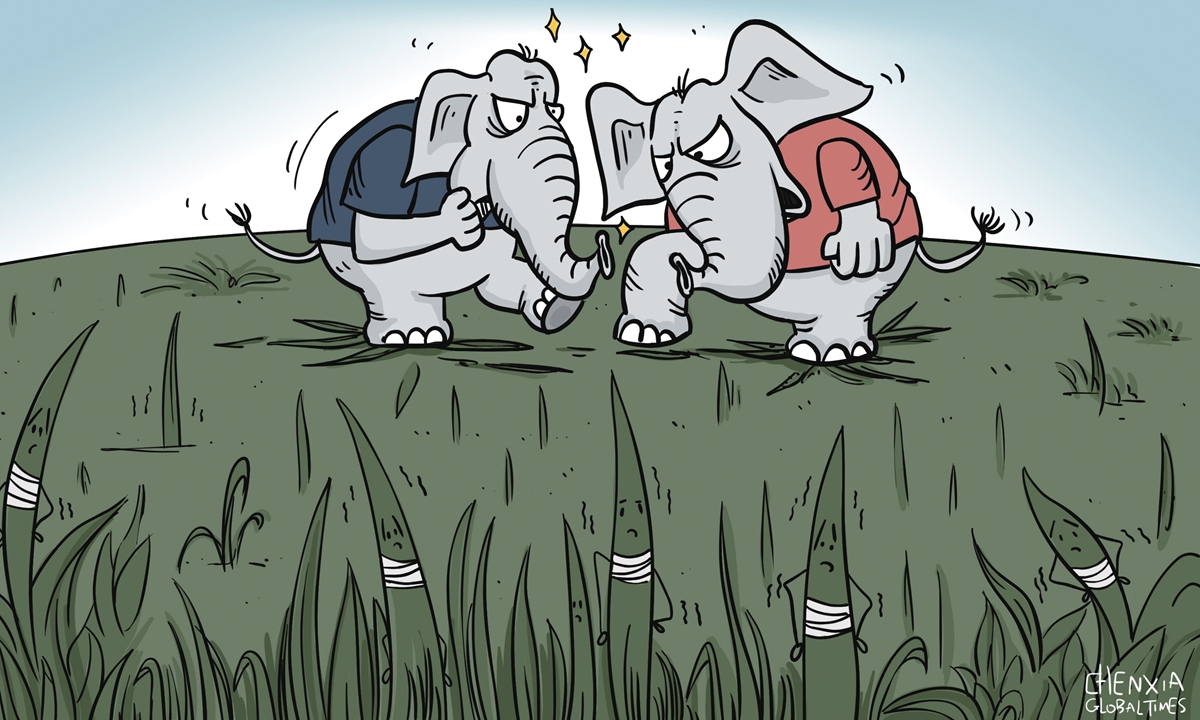Circular Economy in ASEAN: A Brief View on Plastics Harmonization and Micro, Small, and Medium-sized Enterprises Inclusion
Written by: Muhammad Rasyid Ridho
On 18 October 2021, ASEAN’s Framework for Circular Economy for the ASEAN Economic Community (AEC) was promulgated at the 20th AEC Council Meeting. It signifies the importance of the circular economy (CE) as part of the AEC. This system is ostensible as an environmental-friendly alternative. However, ASEAN’s decision on this issue after six years of AEC establishment brings a simple question, what does “CE” mean, since it is quite a novel term for this region? Besides, how will this concept fit into the more extensive framework of AEC?
There is plenty of definition regarding CE. The most popular one is from the Ellen MacArthur Foundation (2012), a restorative industrial economic system to ensure the effective flow means of production and rebuild the used resources. The very purpose of this approach is to “close the loop” of the production process for attaining sustainability of the environment (Winkler, 2011). The “closure” is needed since the “linear economy” prevails as the major production process, which is characterized by “take-make-dispose”, dependent on new material use, and with no concern for the potential value generation of waste, which leads to the accumulation of waste as its negative consequence (Rathinamoorthy, 2019). The basic principles of CE are reduced, reuse, and recycle, sometimes with other additions such as repair, refurbishment, remanufacture, and repurposing.
Indeed, there are already many attempts from Southeast Asian scholars to explain CE. Most of the research is focused on its technical implementation and potential in the future in various fields. The level where it is operated also ranges from the village to the national level. However, despite the different nature or scopes of those research, it is to be noted that several kinds of research from these countries bring out similar tone-related factors of CE adoption and the recommendations. In the factors of adoption or consumption, it includes the willingness of stakeholders, personal attitude, economic cost and benefit, public acceptance or support, government incentives and support, company culture, and consumer demand (Pasaribu, 2006; Ngan et al., 2019; Jan 2022; Gue et al., 2020; Akkalatham & Taghipour, 2021; Piyathanavong et al., 2021; Tseng et al., 2021; Abbasi et al., 2022).
These researches also point out the recommendations such as: putting the commitment into long-term legal, regulation, and masterplan favoring CE with its enforcement; giving incentives in the forms of funding, grants, or tax to practicing-CE enterprises; raising public awareness; coordinating between stakeholders (between government agencies or government-private-society); campaigning awareness; and supporting research and development (Pasaribu, 2006; Ha, Levillain-Tomasini, Xuan, 2019; Wichai‑utcha & Chavalparit, 2019; Adi & Wibowo, 2020; Abdul-hamid et al., 2020; Dung et al., 2020; Dung & Hong, 2021; Hoa & Khanh, 2021; Khor & Teoh, 2021; Taghipour & Akkalatham. 2021; Vân, 2021; Vu et al., 2021; Bueta, 2022; Mangmeechai, 2022). While these researches are conducted in different countries, which automatically only puts emphasis on their respective countries. Thus, there is still a limit on how CE could be seen from a regional perspective. In addition, the other CE common principle that is being implemented in these countries is the 3R (reuse, reduce, recycle) approach (Rahmadi, 2020).
As explained by Anbumozhi and Kimura (2018), while the linear economy is the motor of ASEAN growth, it cannot solve the problem of diminishing natural-nonrenewable resources, inequality, and climate crisis. It has become one of the reasons why the Framework of CE was recently promulgated. Of the strategic priorities contained in the Framework, one that needs to be put into focus is standard harmonization. It is deemed necessary to fulfilling this aspect in the right platform and focus because its absence would be one obstacle to further coordination of regional CE practices, which possibly lead to deeper regional integration in the future (Kojima, 2019).
However, since there are a lot of areas in which sector needs to be great, thus ASEAN perhaps could pick an urgent sector on which it needs to be focused. Regarding this issue, then revisiting the report of Akenji et al. (2019) would be appropriate since their report brings a fresh outlook on regional CE practice, especially on the issue of plastic. He proposes several points regarding the position in which ASEAN could involve, which are: a regional guideline of plastic use; a network of research and development; technical standards for products and recycling; agreement on plastic pollution. Plastic waste has become an issue due to the total ASEAN contribution to plastic waste is 31 million (Trajano, 2022). The timing could not be better; in the same year, ASEAN announced the Framework of CE in AEC and the ASEAN Regional Action Plan for Combating Marine Debris in the ASEAN Member States (2021-2025. The framework could serve as a big umbrella, and the action plan complements the specific aspect. Thus, integrating these two frameworks should promote CE as the long-term remedy for the plastic problem.
It is mentioned briefly in the Framework that micro, small and medium-sized enterprises (MSMEs) are considered on CE practices in ASEAN. The inclusion of SMEs is essential due to their vast numbers in the region, which is approximately 71 million (Tan, 2022). They contribute 97% of total business activity and employ 67% of the working population (Tan, 2022). It is found that enterprises which implement CE practices are more resilient to global economic shocks than others due to their inclination to shorten the supply chain and follow local business situations (Rishanti & Suharyadi, 2020). In relation to the previous discussion, MSMEs need to be catered to in the framework relating to CE and the plastic issue. They need to be supported because it is evidently easier for the bigger company to transition to the CE scheme, while it is another problem for MSMEs due to its perceived high cost. In this regard, then we can revisit OECD’s (2021) suggestion of “greening the SMEs”. The suggestions include capacity support, availability of low-interest financing; incentives through tax exemption or deduction; and government-backed and free consultancy for these MSMEs to give needed information on technical or cost calculation of CE adoption. These are the area where the private sector, MSMEs, and society are essential to tackle the plastic problem at its root while simultaneously creating a circular chain -especially related to plastic- in the region. The intended consequence of MSME inclusion in the CE scheme is more public exposure to CE and a reverse of the known trend that only limited knowledgeable people who are eager to consume CE-based products (Dinh & Nguyen, 2018). Indeed, as a sign of a stronger commitment, the top-down initiatives in form of a more legally binding agreement to translate into national policy serves as the cornerstone for the thriving CE and MSME.
About Writer:
- Muhammad Rasyid Ridho is an Research Assistant at Centre for World Trade Studies Universitas Gadjah Mada (CWTS UGM). His particular research focuses are international political economy, Southeast Asia, and China. For further inquiries, he could be contacted at rasyid.ridho95@gmail.com
Bibliography
- Adi, T. J. W., & Wibowo, P. (2020). Application of circular economy in the Indonesia construction industry. In IOP Conference Series: Materials Science and Engineering (Vol. 849, No. 1, p. 012049). IOP Publishing.https://iopscience.iop.org/article/10.1088/1757-899X/849/1/012049/pdf
- Abdul-Hamid, A. Q., Ali, M. H., Tseng, M. L., Lan, S., & Kumar, M. (2020). Impeding challenges on industry 4.0 in circular economy: Palm oil industry in Malaysia. Computers & Operations Research, 123, 105052.https://doi.org/10.1016/j.cor.2020.105052
- Abbasi, G. A., Keong, K. Q. C., Kumar, K. M., & Iranmanesh, M. (2022). Asymmetrical modelling to understand purchase intention towards remanufactured products in the circular economy and a closed-loop supply chain: An empirical study in Malaysia. Journal of Cleaner Production, 359, 132137.https://doi.org/10.1016/j.jclepro.2022.132137
- Bueta, G. R. P. (2022). Circular Economy Policy Initiatives and Experiences in the Philippines: Lessons for Asia and the Pacific and Beyond. In L. Arthur, D. Hondo,& R. Kohonen (Eds), Prospects for Transitioning from a Linear to Circular Economy in Developing Asia (pp (78-92). Asian Development Bank Institute. Tokyo. https://www.adb.org/sites/default/files/publication/774936/adbi-transitioning-linear-circular-economy-developing-asia-web.pdf
- Dinh, T.H., & Nguyen, H. L. (2018). An Assessment of Vietnamese Firms’ Readiness to Adopt a Circular Economy. In V. Anbumozhi & and F. Kimura (Eds), Industry 4.0: Empowering ASEAN for the Circular Economy (pp.161-202). ERIA. Jakarta. https://www.eria.org/uploads/media/ERIA-Books-2018-Industry4.0-Circular_Economy.pdf
- Dung, N. T. P., & Hong, T. H. (2021). Circular Economy Policies of Some Asian Countries and Recommendations for Vietnam. In International Conference on Emerging Challenges: Business Transformation and Circular Economy (ICECH 2021) (pp. 486-494). Atlantis Press. https://www.atlantis-press.com/article/125965445.pdf
- Dung, N. Q., Phuong, N. H., Dinh, D. Q., & Binh, N. T. (2021). The Development Of Circular Economy In Some Countries And Valuable References For Vietnam. European Journal of Molecular & Clinical Medicine, 7(03), 2020. https://ejmcm.com/article_5971_c40ddb2d224b57dd18bd3ac63685f075.pdf
- Gue, I. H. V., Promentilla, M. A. B., Tan, R. R., & Ubando, A. T. (2020). Sector perception of circular economy driver interrelationships. Journal of Cleaner Production, 276, 123204. https://doi.org/10.1016/j.jclepro.2020.123204
- Ha, N. T. V., Levillain-Tomasini, A., & Thang, N. T. X. Circular Economy and Waste Recycling-Review, Challenges and Opportunities in Vietnam and France. https://facoparis.com/wp-content/uploads/2021/06/Baibao13_Ha-et-al-2019.pdf
- Hoa, D. P., & Khanh, N. H. (2021). Applying the Circular Economy Model to Urban Waste Management in Singapore and Experiences for Vietnam. In International Conference on Emerging Challenges: Business Transformation and Circular Economy (ICECH 2021) (pp. 257-277). Atlantis Press. https://www.atlantis-press.com/article/125965434.pdf
- Jan, M. T. (2022). Factors Influencing the Purchase of Circular Economy Products: A Comparative Analysis of Malaysia and Turkey. International Journal of Business and Society, 23(2), 802-819.https://doi.org/10.33736/ijbs.4839.2022
- Khor, H. T., & Teoh, G. K. H. (2021). Agriculture and Food Circularity in Malaysia. In Liu, L., Ramakrishna, S. (eds) An Introduction to Circular Economy (pp. 107-130). Springer, Singapore. https://doi.org/10.1007/978-981-15-8510-4_7
- Kojima, K. (2022) Toward a Regional Circular Economy Policy for East Asia and the Association of Southeast Asian Nations. In In L. Arthur, D. Hondo,& R. Kohonen (Eds), Prospects for Transitioning from a Linear to Circular Economy in Developing Asia (pp. 9-21). Asian Development Bank Institute. Tokyo https://www.adb.org/sites/default/files/publication/774936/adbi-transitioning-linear-circular-economy-developing-asia-web.pdf
- MacArthur, E. (2013). Towards the circular economy. Journal of Industrial Ecology, 2(1), 23-44. https://www.werktrends.nl/app/uploads/2015/06/Rapport_McKinsey-Towards_A_Circular_Economy.pdf
- Mangmeechai, A. (2022). The life-cycle assessment of greenhouse gas emissions and life-cycle costs of e-waste management in Thailand. Sustainable Environment Research, 32(1), 1-13. https://sustainenvironres.biomedcentral.com/track/pdf/10.1186/s42834-022-00126-x.pdf
- Ngan, S. L., How, B. S., Teng, S. Y., Promentilla, M. A. B., Yatim, P., Er, A. C., & Lam, H. L. (2019). Prioritization of sustainability indicators for promoting the circular economy: The case of developing countries. Renewable and Sustainable Energy Reviews, 111, 314-331. https://doi.org/10.1016/j.rser.2019.05.001
- OECD. (2021). Facilitating the Green Transition for ASEAN SMEs: A Toolkit For Policymakers. Retrieved from https://www.oecd.org/southeast-asia/regional-programme/networks/Facilitating-green-%20transition-for-ASEAN-SMEs.pdf
- Pasaribu, S. (2006). Factors affecting circular economy promotion in Indonesia: The revival of agribusiness partnership.Forum Penelitian Agro Ekonomi. 24(2), 135–144. http://repository.pertanian.go.id/bitstream/handle/123456789/10410/4049-9338-1-SM.pdf?sequence=1&isAllowed=y
- Piyathanavong, V., Garza-Reyes, J. A., Huynh, V. N., Olapiriyakul, S., & Karnjana, J. (2021). Circular Economy: Exploratory Study of Steel Industry in Thailand. http://www.ieomsociety.org/singapore2021/papers/1.pdf
- Rahmadi, A. (2020) Industry 4.0 Readiness for the Circular Economy: Transition Trends and Readiness of Indonesia’s Textile and Electronics Sectors. In V. Anbumozhi, K. Ramanathan, & H. Wyes (Eds), Assessing the Readiness for Industry 4.0 and the Circular Economy (pp. 251-269). Economic Research Institute for ASEAN and East Asia. Jakarta. http://hdl.handle.net/11540/13049.
- Rathinamoorthy, R. (2018). Circular Fashion. In. S. S. Muthu (Ed.), Circular Economy in Textiles and Apparel: Processing, Manufacturing, and Design (pp. 13-48). Woodhead publishing. Duxford. Retrieved from https://www.elsevier.com/books/circular-economy-in-textiles-and-apparel/muthu/978-0-08-102630-4
- Rishanty, A., & Suryahadi, A. (2020). Circular Economy and Productivity in A Large Developing Country: Empirical Evidence from Indonesia (No. WP/10/2020). http://publication-bi.org/repec/idn/wpaper/WP102020.pdf
- Taghipour, A., & Akkalatham, W. (2021). Circular Economy of Steel Recycling Companies in Thailand. Circular economy and sustainability, 1(3), 907–913. https://doi.org/10.1007/s43615-021-00058-5
- Tan, M. (2022). Realizing the Potential of Over 71 Million MSMEs in Southeast Asia. Retrieved from SEADS:https://seads.adb.org/solutions/realizing-potential-over-71-million-msmes-southeast-asia
- Trajano, J. C. (2022). CO22011 | Plastic Pollution in Southeast Asia: Wasted Opportunity? . Retrieved from RSIS: https://www.rsis.edu.sg/rsis-publication/nts/plastic-pollution-in-southeast-asia-wasted-opportunity/#.Yvo6hHZBzb0
- Tseng, M. L., Tran, T. P. T., Fujii, M., Lim, M. K., & Negash, Y. T. (2021). Modelling hierarchical circular supply chain management enablers in the seafood processing industry in Vietnam under uncertainties. International Journal of Logistics Research and Applications, 1-29. https://doi.org/10.1080/13675567.2021.1965105
- Vân, T. H. T. (2021). Circular Economy in Kenya and Some Implications for Vietnam. International Journal of All Research Writings, 2(7), 38-42. https://www.ijarw.com/Users/Manuscript/Download/?file=IJARW1403.pdf
- Vu, D. H., Hoai, T., Thi, H., Tu, C., Thi, V., Thu, H., & Thi, V. (2021). Circular economic development in Vietnam. Journal of Contemporary Issues in Business & Government, 27(5).https://www.cibgp.com/article_11692_d20ba363275b3ad133842c18cf530a6e.pdf
- Wichai-Utcha, N., & Chavalparit, O. (2019). 3Rs Policy and plastic waste management in Thailand. Journal of Material Cycles and Waste Management, 21(1), 10-22. https://doi.org/10.1007/s10163-018-0781-y
- Winkler, H. (2011). Closed-loop production systems—A sustainable supply chain approach. CIRP Journal of Manufacturing Science and Technology, 4(3), 243-246. http://doi/org/10.1016/j.cirpj.2011.05.001

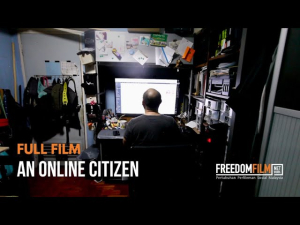
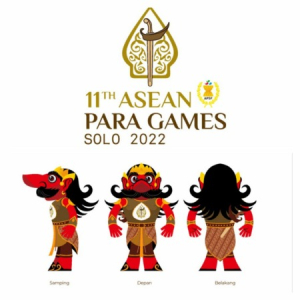 Logo and Mascot of 11th ASEAN Para Games (Foto: Jawapos)
Logo and Mascot of 11th ASEAN Para Games (Foto: Jawapos)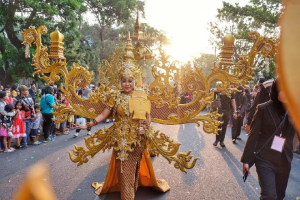 Festival in Solo: Solo Batik Carnival (Foto: Instagram/ solobatikcarnival_official)
Festival in Solo: Solo Batik Carnival (Foto: Instagram/ solobatikcarnival_official)